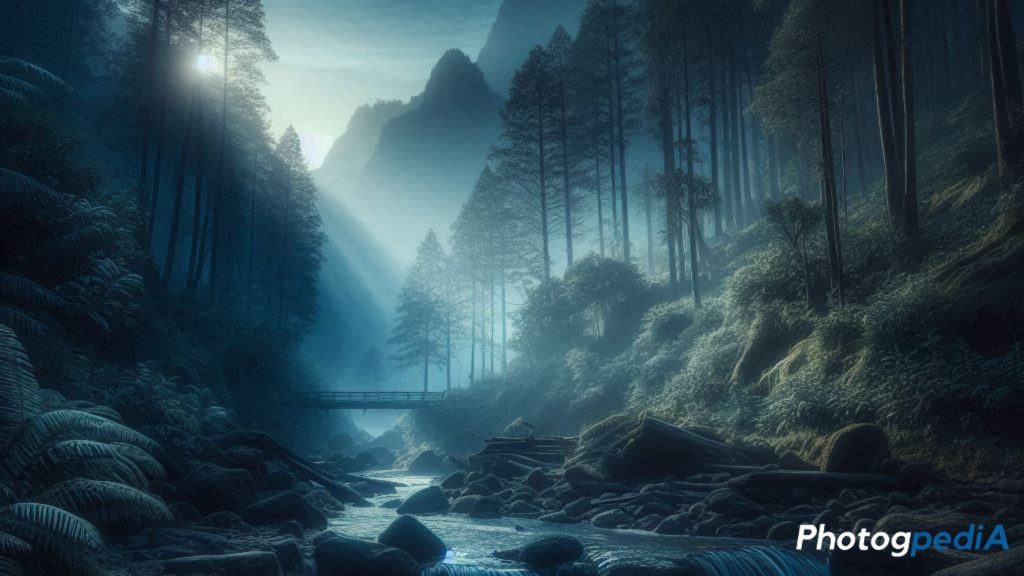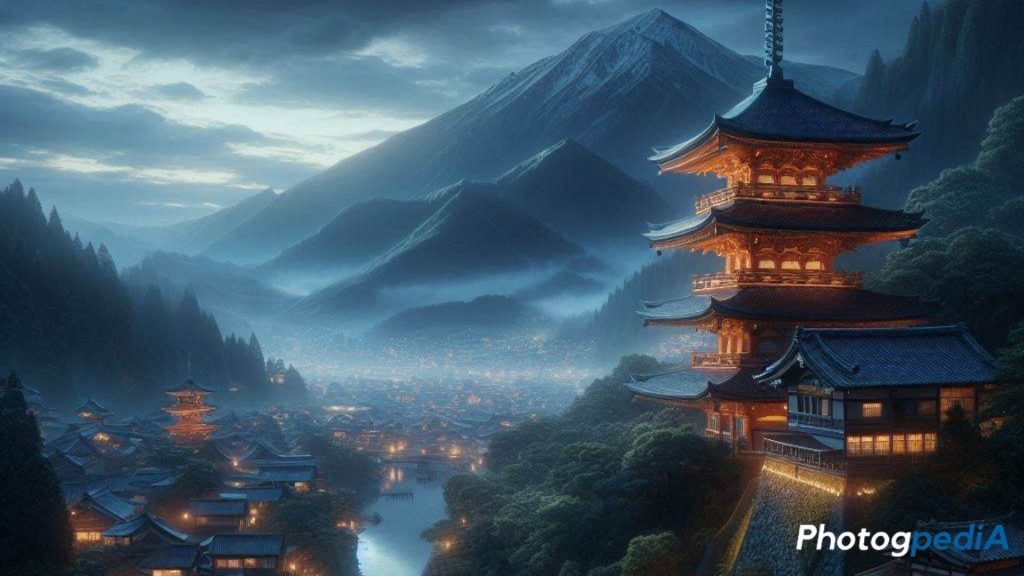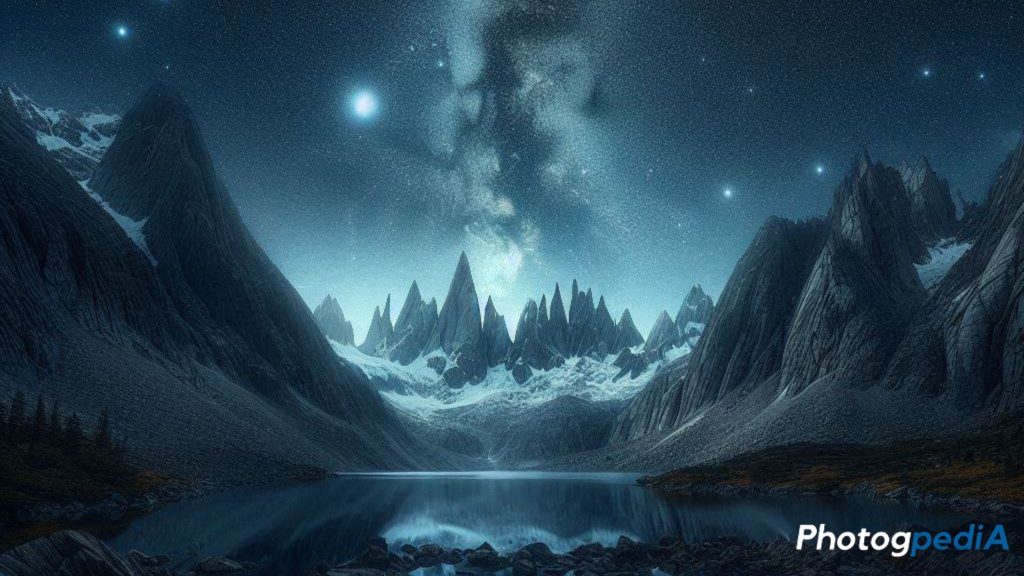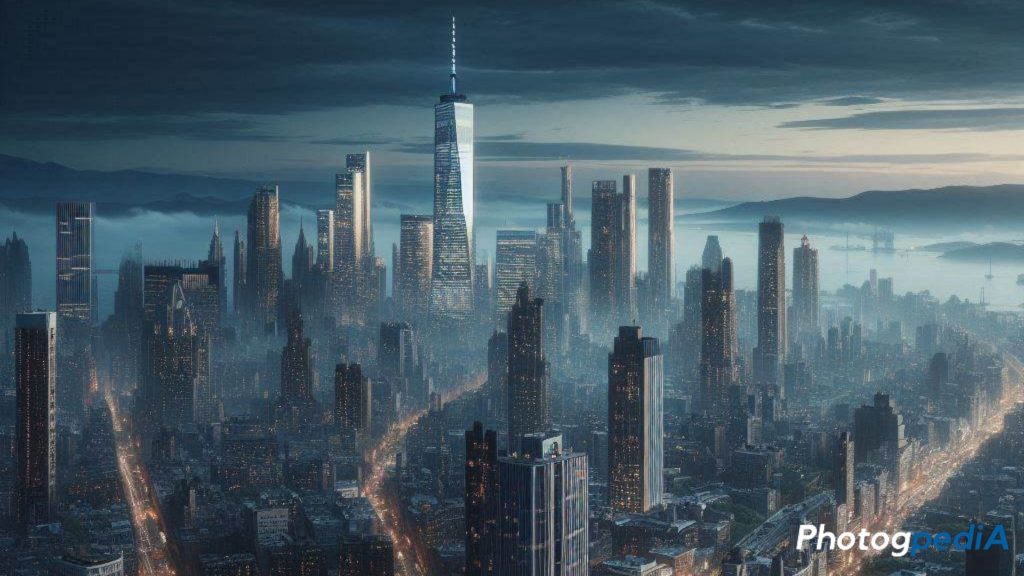There’s something magical about the night—when the world is draped in darkness, and the stars come out to play. For photographers, this presents a unique opportunity to capture the beauty of landscapes in a completely different light (pun intended). But, while landscape photography at night can be incredibly rewarding, it also comes with its own set of challenges. Whether you’re a seasoned photographer looking to expand your skills or a beginner curious about night photography, this guide will help you navigate the night to create stunning landscape photos.
Table of Contents
What Is Landscape Photography?
Landscape photography involves capturing the natural environment, often emphasizing wide, expansive views of mountains, forests, oceans, and more. It’s about showcasing the beauty of the world around us, typically in natural light.
Why Nighttime Landscape Photography?
Nighttime landscape photography allows you to see the world in a completely different way. The absence of sunlight forces you to focus on other light sources—like the moon, stars, or even city lights—adding depth and mood to your images. It’s an art form that combines patience, technical skill, and creativity.
Essential Equipment
Camera Requirements
Not all cameras are useful when it comes to night photography. You’ll need a camera that performs well in low light conditions—preferably one with a large sensor and good ISO performance. Full-frame cameras are often preferred, but many modern APS-C and Micro Four Thirds cameras can also do a great job.
Lenses for Night Photography
A fast lens (with a wide maximum aperture like f/1.4 to f/2.8) is ideal for capturing as much light as possible. Prime lenses, known for their sharpness and wide apertures, are popular choices. However, wide-angle zoom lenses can offer versatility, allowing you to capture vast landscapes and the night sky.
Tripods: A Must-Have
A sturdy tripod is non-negotiable for night photography. With the long exposure times required to capture enough light, any camera shake will result in blurry images. Investing in a high-quality tripod will ensure your camera remains steady throughout your shoot.
Other Useful Gear
In addition to your camera, lens, and tripod, there are a few other items that can make your night photography sessions more successful:
- Remote Shutter Release: Prevents camera shake when triggering the shutter.
- Flashlight: Helps you see your gear and surroundings in the dark.
- Spare Batteries: Long exposures can drain your battery faster than usual.
Camera Settings for Night Photography

Choosing the Right ISO
ISO determines your camera’s sensitivity to light. For night photography, you’ll generally need to use a higher ISO, but be mindful of noise. Start with an ISO of 1600 or 3200, and adjust as necessary depending on your camera’s performance.
Shutter Speed Essentials
Shutter speed is crucial for night photography. A slower shutter speed (longer exposure) allows more light to hit the sensor. Depending on your subject, you might use anything from a few seconds to several minutes. Remember that longer exposures can capture star trails and movement in clouds or water.
Aperture Settings
A wide aperture (low f-number) lets in more light, which is essential for night photography. However, if you want more depth of field, you may need to balance this by increasing your ISO or exposure time.
Focus: Manual vs. Autofocus
Autofocus can struggle in low light, so it’s often best to switch to manual focus. Use live view and magnify the image to fine-tune your focus. Focusing on a bright star or distant light can help ensure your landscape is sharp.
Planning Your Night Shoot
Scouting Locations
Before you head out, scout your location during the day. Look for interesting compositions and consider how they’ll look at night. This will save you time and frustration when shooting in the dark.
Checking the Weather
Weather conditions are crucial for night photography. Clear skies are ideal for star photography, while cloudy skies might work better if you’re aiming to capture moody, long exposures. Always check the forecast before heading out.
Understanding the Moon Phases
The moon’s phase can dramatically affect your night photography. A full moon illuminates the landscape, making it easier to capture detail, while a new moon offers darker skies perfect for star photography.
Light Pollution Considerations
Light pollution from nearby cities can interfere with your night photography, washing out the stars and reducing contrast. If possible, find a location far from city lights to capture the night sky in all its glory.
Composition Tips for Night Landscapes

Rule of Thirds at Night
The rule of thirds applies just as much at night as it does during the day. Divide your frame into thirds, both horizontally and vertically, and place key elements along these lines or at their intersections to create a balanced composition.
Framing Your Shot
Use natural elements like trees, mountains, or even the horizon to frame your shot. This helps to create depth and draws the viewer’s eye into the scene.
Using Leading Lines
Leading lines guide the viewer’s eye through your image. Roads, rivers, or lines of light from cars can be effective leading lines in night photography.
Incorporating the Night Sky
The night sky can add a dramatic element to your landscape photography. Whether you’re capturing stars, the Milky Way, or the Northern Lights, the sky can transform a simple landscape into something extraordinary.
Mastering Light in Night Photography
Working with Low Light
Low light is the biggest challenge in night photography. To overcome this, use a wide aperture, increase your ISO, and experiment with longer exposures to capture the right amount of light.
Using Artificial Light Sources
Artificial light sources, like streetlights or light from buildings, can add interesting elements to your night photos. Use them to your advantage, but be careful of overexposure and unwanted glare.
Light Painting Techniques
Light painting involves using a handheld light source to “paint” light into a scene during a long exposure. This technique can create surreal and artistic effects, adding an extra dimension to your night photography.
Capturing the Milky Way and Stars

Finding the Milky Way
The Milky Way is one of the most breathtaking subjects in night photography. To capture it, find a dark location far from light pollution and plan your shoot during a new moon when the sky is darkest.
Techniques for Star Trails
Star trails are created by capturing the movement of stars across the sky over a long period. To achieve this, set your camera to a very long exposure or take multiple shorter exposures and stack them in post-processing.
Shooting the Northern Lights
The Northern Lights, or Aurora Borealis, is a stunning natural phenomenon that’s a dream subject for many photographers. Use a wide-angle lens, high ISO, and short to medium exposures to capture this ethereal display of light.
Post-Processing Night Landscape Photos
Basic Editing Steps
Start with basic adjustments like exposure, contrast, and white balance. Night photos often require more post-processing, so don’t be afraid to experiment with different settings.
Reducing Noise in Night Photos
High ISO settings can introduce noise into your photos. Use noise reduction software during post-processing to clean up your images without losing too much detail.
Enhancing Stars and the Milky Way
Bring out the stars and Milky Way by increasing clarity, contrast, and sharpness. Subtle adjustments can make a big difference in how your night sky appears.
Adjusting Colors and Contrast
Night photos often have a cool color cast. Use color grading tools to enhance or correct colors, and adjust contrast to make your landscape pop.
Overcoming Common Challenges in Landscape Photography at Night
Dealing with Noise
Noise is a common issue in night photography due to high ISO settings. While some noise is inevitable, it can be minimized with proper exposure and post-processing techniques.
Managing Long Exposures
Long exposures can lead to battery drain, overheating, and noise. Use an external power source if possible, and take breaks between shots to prevent your camera from overheating.
Keeping Your Gear Safe
Night photography often involves harsh conditions. Keep your gear safe by using weather-sealed equipment, carrying spare batteries, and protecting your camera from dew and moisture.
Advanced Techniques for Landscape Photography at Night
Focus Stacking
Focus stacking involves taking multiple photos at different focus distances and blending them in post-processing. This technique can create a fully sharp image from foreground to background.
Panoramas at Night
Night panoramas require careful planning and execution. Use a tripod and take overlapping shots, then stitch them together in post-processing to create a wide, detailed view of the night landscape.
Time-Lapse Photography
Time-lapse photography captures the passage of time, making it ideal for showing the movement of stars or the changing light in a landscape. Use an intervalometer to take a series of images over a set period.
Inspiration and Creativity for Landscape Photography at Night
Experimenting with Different Perspectives
Don’t be afraid to experiment with different angles and perspectives. Shooting from a low angle or using reflections can add a unique twist to your night landscape photos.
Breaking the Rules: Creative Freedom
While it’s important to understand the rules of photography, don’t be afraid to break them. Night photography offers a lot of creative freedom, so experiment with different techniques and styles to create something truly unique.
Learning from the Pros
Study the work of professional night photographers for inspiration. Analyze their compositions, techniques, and use of light to improve your own skills.
Safety Tips for Night Shoots
Staying Safe in Remote Locations
Shooting at night often means venturing into remote locations. Always tell someone where you’re going, carry a charged phone, and bring a flashlight or headlamp.
Keeping Warm and Dry
Night photography can be cold, especially in the winter. Dress in layers, wear a hat and gloves, and bring a thermos of hot drink to stay warm.
Emergency Preparedness
Always be prepared for emergencies. Carry a first aid kit, extra batteries, and a fully charged phone. Know the nearest exit route and have a plan in case of an emergency.
Ethical Considerations
Respecting Nature and Wildlife
Always respect the environment when photographing at night. Stick to established trails, avoid disturbing wildlife, and leave no trace behind.
Minimizing Light Pollution
Light pollution affects not just photographers but also wildlife and the environment. Use dimmed or red lights when possible, and avoid using bright lights that can interfere with the natural surroundings.
Conclusion
Landscape photography at night offers a unique and rewarding challenge. With the right equipment, knowledge, and creativity, you can capture stunning images that reveal the hidden beauty of the night. Whether you’re photographing the Milky Way, star trails, or the Northern Lights, the key is to experiment, be patient, and enjoy the process. So grab your camera, head out into the night, and start capturing the world in a whole new light.
FAQs
- What is the best time for night photography?
- The best time is during the night, ideally under a new moon for dark skies or during a full moon if you want more light on the landscape.
- Can I do night photography without a tripod?
- While possible, it’s challenging. A tripod is essential for stability during long exposures.
- How do I focus my camera at night?
- Use manual focus, magnify the image in live view, and focus on a bright star or distant light.
- What are some beginner tips for night photography?
- Start with simple compositions, use a tripod, experiment with settings, and be patient.
- How can I improve my night photography skills?
- Practice regularly, study the work of professionals, experiment with different techniques, and don’t be afraid to make mistakes.
About the Author
Hi, I’m Mark – an amateur photographer that first started in 2020. I particularly capture action figures in miniature settings and dioramas. You can follow more of my work at the following social media channels:
- Instagram – iselandmarkventures
- Facebook – iselandmarkventures
- YouTube – The Iselandmarkventures

